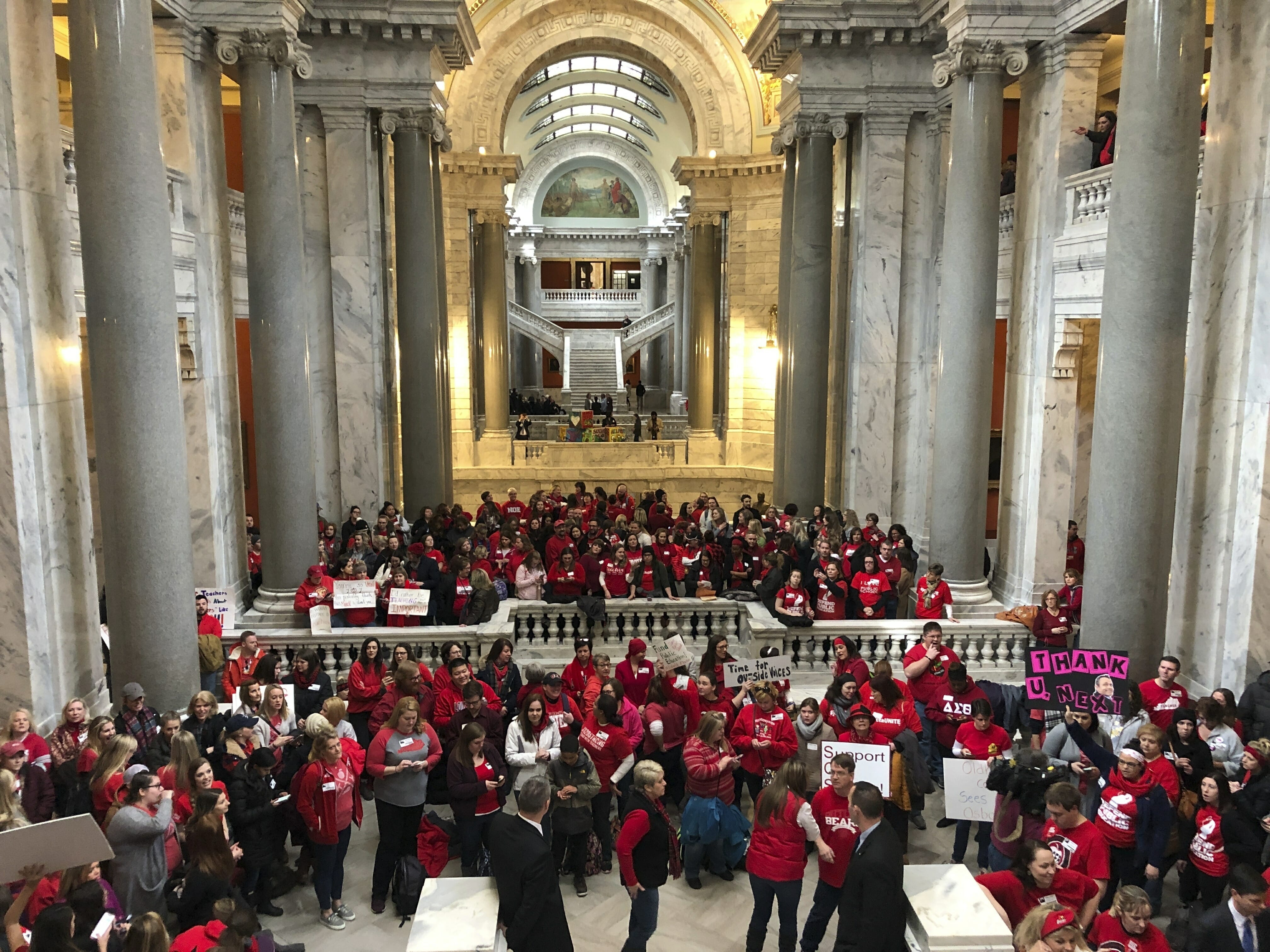
Multiple School Districts Forced To Close After Teachers Coordinate Use of Sick Days
At least four Kentucky school districts were forced to close Thursday as hundreds of teachers called in sick to protest proposed legislation at the state Capitol.
It was the third time in the past week districts were forced to cancel classes because of too many teacher absences. And it was the second closure in a row for Jefferson County Public Schools, the state’s largest district and one of the biggest in the country with nearly 100,000 students.
Thursday’s action comes one year after teacher uprisings in at least five states, part of a movement advocating for better pay, more education funding and protections for traditional pension benefits.
In Kentucky, teachers don’t strike but they coordinate to all use their sick days on the same day, forcing districts to close because they don’t have enough substitutes to cover classes. Statewide teacher groups, including the Kentucky Education Association and KY 120 United, had urged teachers to go to work Thursday. Some districts, including the state’s second largest system in Fayette County, sent delegations of teachers to Frankfort to keep the schools open.
But the call for a “sick out” in some districts spread quickly on social media, forcing administrators to close schools.
“Teachers are severely concerned that if they don’t stand up and come out of their classrooms for a moment, even today, to have their voice heard, then we’re not going to be able to effectively do our jobs,” said John Calhoun, a 32-year-old teacher at Hebron Middle School in Bullitt County. “Teachers feel last year was reactive. Last year legation was passed and then we stood up. We want to be on the forefront.”
Teachers have many concerns, but the biggest one appeared to be House bill 205, which would grant tax credits to people who donate to scholarship funds for special needs children and those in foster care or low- to middle-income homes to attend private schools. An analysis by the Legislative Research Commission found it would cost the state $209 million in tax revenue by 2025 — money teachers say should be spent on public education.
Many GOP lawmakers were dismayed about the closures because they have conceded they don’t have the votes to pass the scholarship tax credit bill, which some lawmakers believe would require at least 60 votes out of the 100 seats in the House. GOP Rep. Jerry Miller said Wednesday the Republican Caucus could not get 60 percent of its members to support the bill.
“The fear is out of control. It’s discouraging,” Miller said.
However, Republican leaders have indicated they could attach the scholarship tax credits bill to another tax bill that has already passed the House and the Senate. GOP leaders in both chambers are negotiating a compromise on that bill, which could include reviving the tax credit proposal.
Last year, the state legislature approved public spending of $4,000 a student, the highest dollar amount ever spent on public education in Kentucky. But a new report from the Center on Budget and Policy Priorities found that, adjusting for inflation, Kentucky is paying 13 percent less per student since 2009.
Among the five states that had widespread teacher protests last year, Kentucky was the only state to have a decrease in inflation-adjusted spending, according to the report.
Republican Senate President Robert Stivers said “in some ways” that is a valid argument. But the noted lawmakers put an extra $2 billion into the Kentucky Teachers Retirement System, the first time in a decade that lawmakers had paid the full amount required to keep the system solvent.
“That’s part of funding education,” Stivers said.
Calhoun, the middle school teacher in Bullitt County, said that type of thinking “creates a further schism” between educators and lawmakers.
“Sending the message that it’s either going to be your pensions or your classroom is the wrong message to send,” he said.
The Western Journal has reviewed this Associated Press story and may have altered it prior to publication to ensure that it meets our editorial standards.
Truth and Accuracy
We are committed to truth and accuracy in all of our journalism. Read our editorial standards.
Advertise with The Western Journal and reach millions of highly engaged readers, while supporting our work. Advertise Today.












